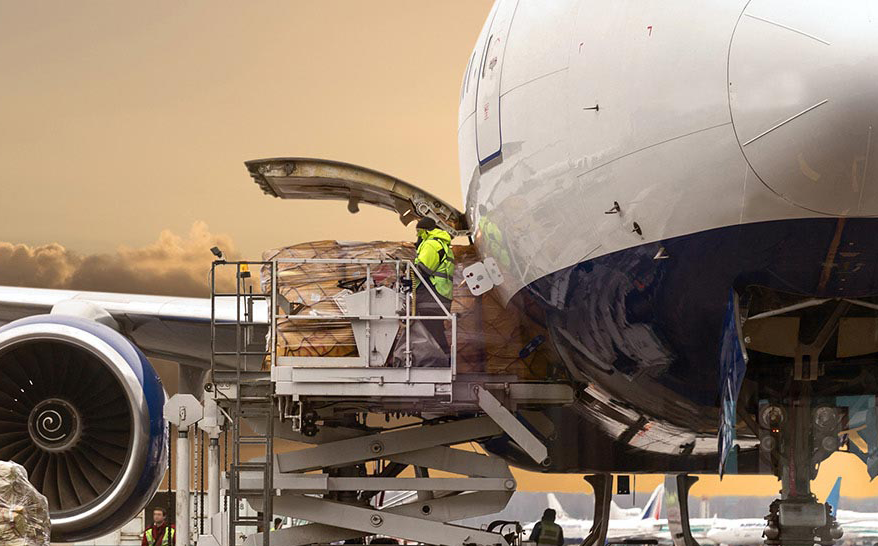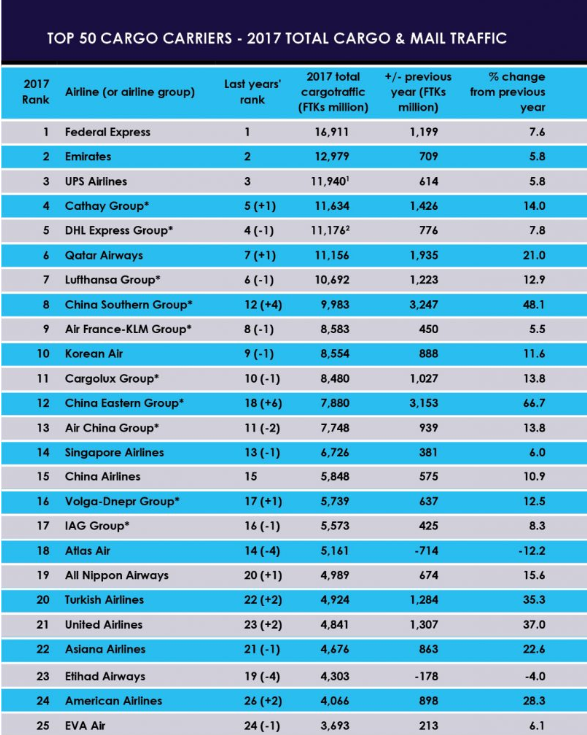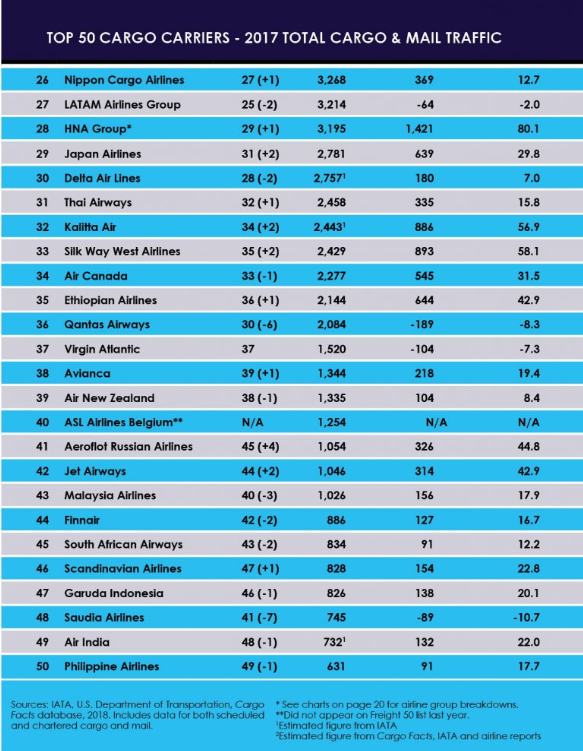
When economic indicators are grim and airfreight businesses are looking for a turnaround, it’s easier to spot the positive signs of hope in the industry. But when the outlook has been rosy – like it has been for much of the last 18 months for air cargo – carriers may have a tougher time preparing for problems on the horizon.
For instance, the entire year of 2017, as well as the first half of 2018, have enjoyed near-record growth in demand for airfreight, and the results can be seen easily in our “Freight 50 List.” The increased demand also brought volatility to the list, with 44 carriers changing positions on the rankings. For most, the moves are positive – only six carriers experienced contraction in the number of freight tonne kilometers (FTKs) handled in 2017, and we welcomed one new carrier for the first time.

However, according to the responses we received during the completion for our Freight 50 List, the good times for cargo may be headed for turbulent weather, in the form of higher fuel prices and problems with finding enough air capacity to meet e-commerce demand. But not everybody is listening to the same weather report.
“After picking up in the second half of 2016, industry-wide FTKs rose 10 percent in 2017, up from 3.6 percent in 2016,” said the researchers in IATA’s latest “World Air Transport Statistics” (WATS) report.” Airfreight grew more than twice as fast as global trade volumes overall during 2017 – the widest margin of out-performance since the rebound from the global financial crisis in 2010. The strong growth in airfreight volumes was driven by the global inventory restocking cycle and by buoyant demand for manufactured exports. In annual terms, international FTK growth accelerated in all regions.”

IATA also described 2017’s performance as two distinct halves, based on prices for crude oil and jet fuel. “The first half of the year saw prices drift lower, but that trend was reversed in the year’s second half,” the report said. Based on some of the early air cargo reports for the middle of this year, 2018 may also end up being a study in contrasts as growth rates began flattening out in May and June.
While there is no single, definitive source of carrier data, Air Cargo World considers this Freight 50 listing to be the most comprehensive report on the movement of freight and mail in the business – based on information from the WATS Report, the U.S. Department of Transportation (DOT), the extensive database maintained by our sister publication, Cargo Facts, and from statistics supplied by more than 200 carriers.
- Read the original story on ACW
.









